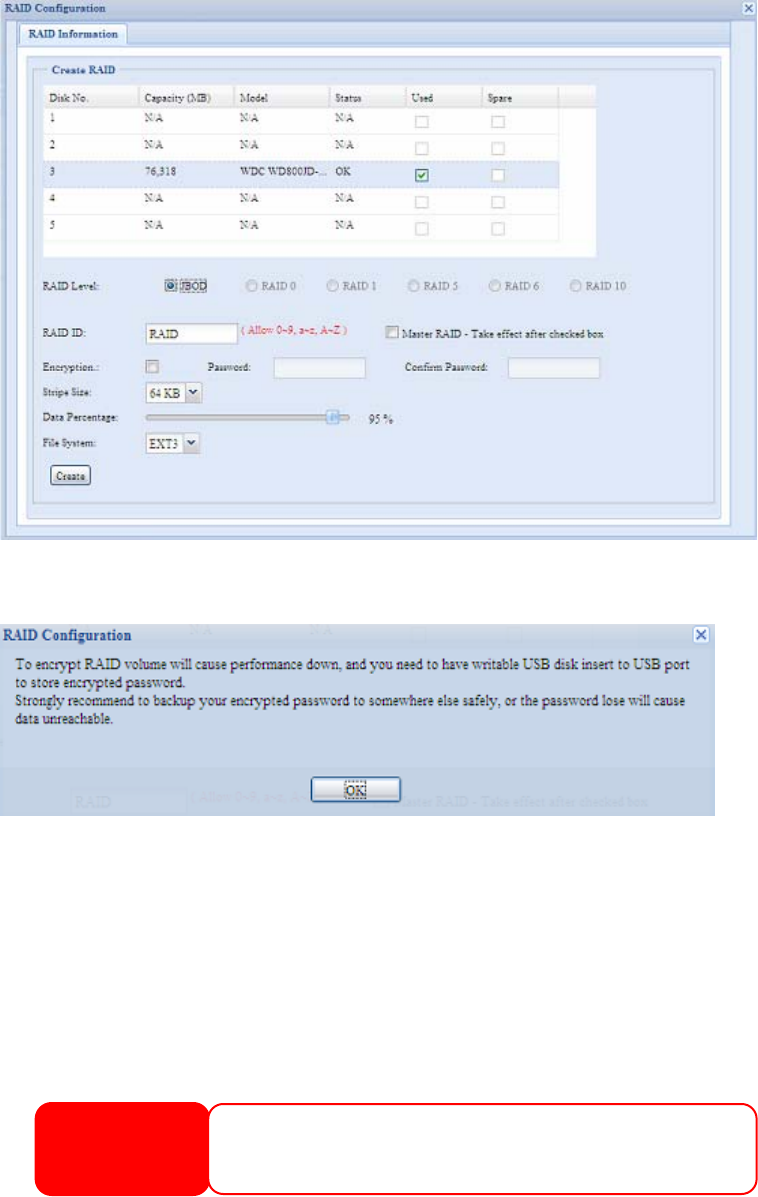User`s manual
Table Of Contents
- Copyright and Trademark Notice
- About This Manual
- Limited Warranty
- Safety Warnings
- Table of Contents
- Chapter 1: Introduction
- Chapter 2: Hardware Installation
- Chapter 3: First Time Setup
- Chapter 4: System Administration
- Overview
- Web Administration Interface
- Language Selection
- System Information
- System Management
- System Network
- FTP
- Media Server
- HTTP/ Web Disk
- UPnP
- Nsync Target
- Bonjour Setting
- Storage Management
- User and Group Authentication
- Application Server
- iTunes® Server
- Module Management
- Module Installation
- System Module
- User Module
- Backup
- Chapter 5: Using the N7700SAS
- Chapter 6: Tips and Tricks
- Chapter 7: Troubleshooting
- Chapter 8: Revision updated (FW 3.00.03 to 3.00.04)
- Chapter 9: Revision updated up to FW 3.00.08
- Chapter 10: Version 3.01.00 Firmware Updates
- Appendix A: Product Specifications
- Appendix B: Customer Support
- Appendix C: RAID Basics
- Appendix D: Active Directory Basics
- Appendix E: Licensing Information

RAID Volume Encryption
With firmware v3.00.04, you can protect your data by using RAID Volume
Encryption function to prevent the risk of data exposure. To activate this function,
the Encryption option needs to be enabled while the RAID is created and followed
by password input for identification. Also, an external writable USB disk plugged into
any USB port on the system is required to save the password you have entered
while the RAID volume is being created. See the screenshot below for details.
Once the Create button has been pressed with the Encryption checkbox enabled,
the following message pop-up will appear for confirmation.
After the RAID volume has been created, you may remove this USB disk until the
next time the system boots. The RAID volume can not be mounted if the USB disk
with key can not be found in any system USB port when the volume is accessed. To
activate the encrypted volume, plug the USB disk containing the encryption key and
into any system USB port.
We are strongly recommended copying the RAID volume encryption key to a safe
place. You can find the encryption key file from the USB disk in the following format:
(RAID volume created date)_xxxxxx.key
There is no way to rescue data back if the key
is lost.
Please keep USB disk in a safe place and also backup the encrypted key.
WARNING
121










